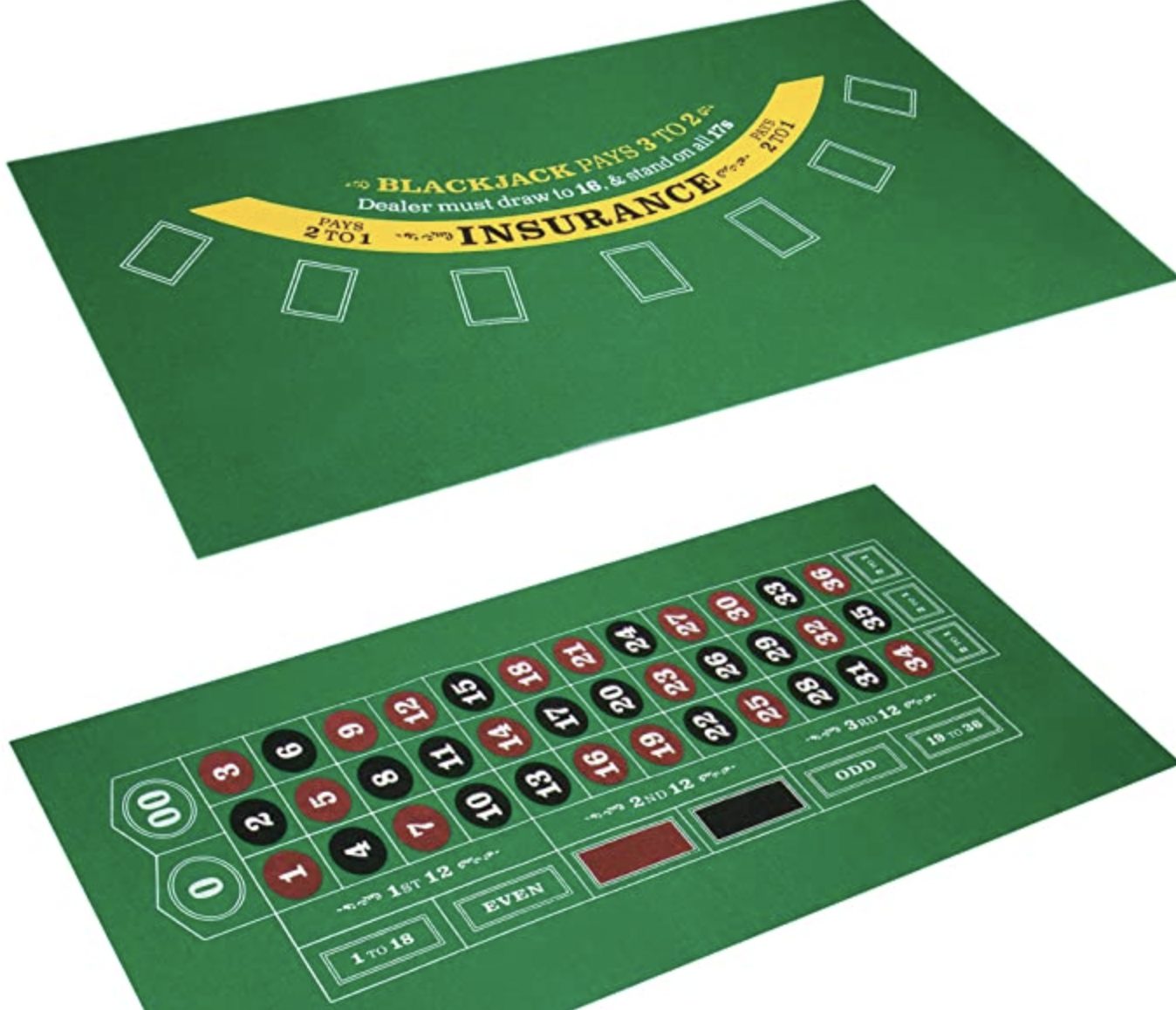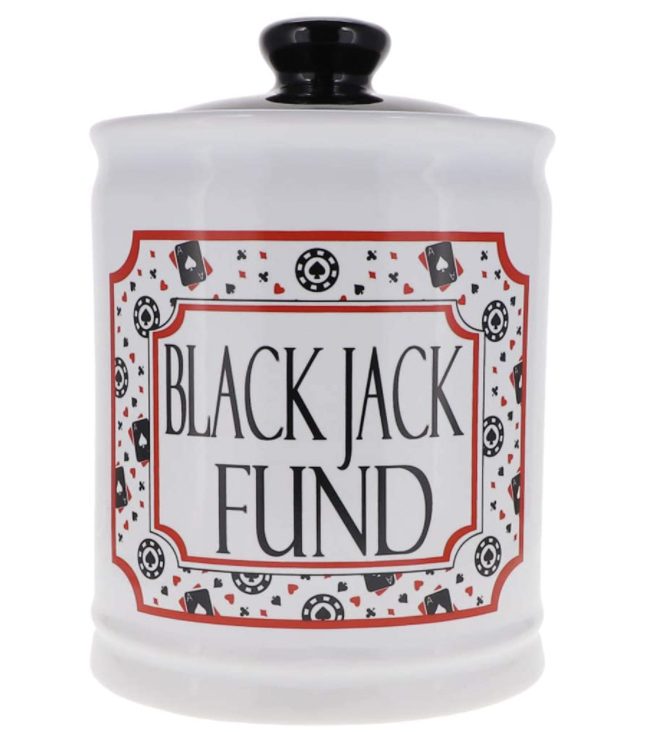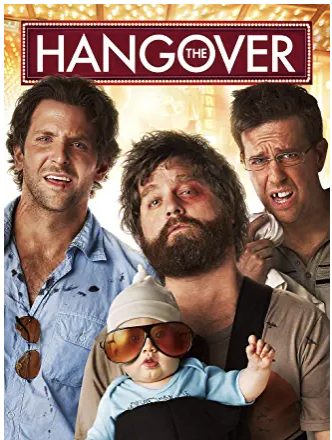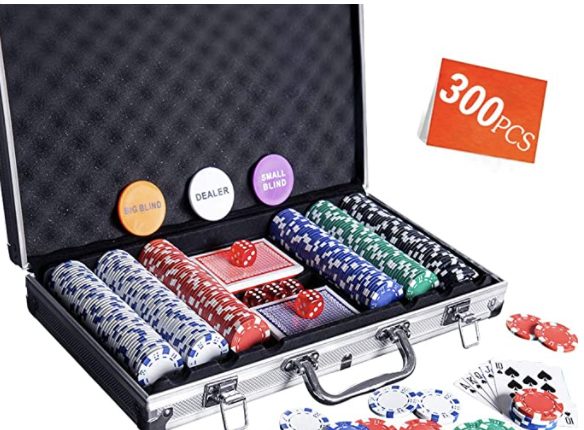Basic Blackjack Strategies to Win Big

The only thing standing between poor you and rich you are the two cards in front of you. Wanna bet? Tweet
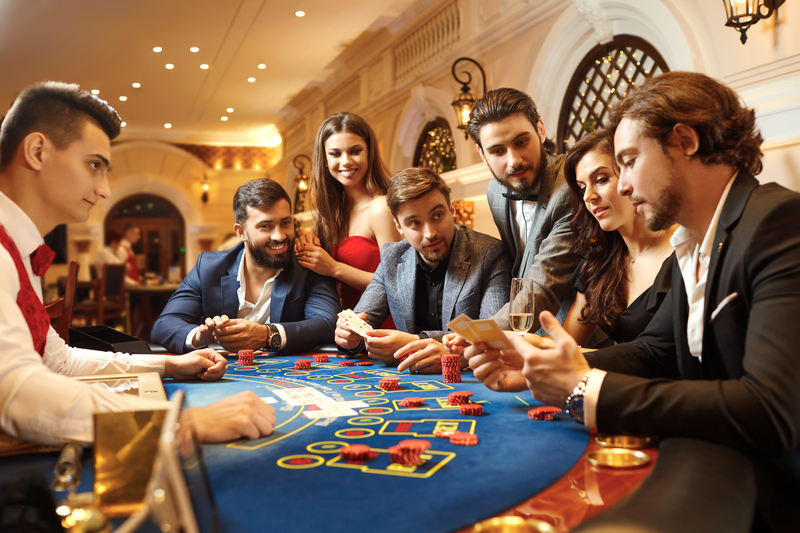
Highlights
Blackjack isn't a game you play against other players.
It's a game you play against the house, against the man, against the fat bourgeoise jackals of capitalism. The odds are not in your favor.
Viva Las Vegas!. Or virtually anywhere else throughout the country these days, for that matter.
Gambling has become wildly popular across all age groups. Not only popular, but legal. (Mostly.) From picking daily numbers, instant-win scratch-off cards, all the way to online poker tournaments, sports betting, slots and old school table games, if you have a penchant for making a wager, you should be able to find the type of game and environment of your choice to place your bet.
Roulette and craps are also very popular — and in some ways, even more fun. However, the odds generally aren’t as good as playing Blackjack — if you know the game.
But this article will describe how to play one of the most popular table games in the country, Blackjack. Roulette and craps are also very popular — and in some ways, even more fun. However, the odds generally aren’t as good as playing Blackjack, if you know the game. The rules, the odds, the etiquette, are all part of the experience. When you understand what is going on at the table, then you can truly begin to enjoy yourself and really get into the action along with the other players.
You might be asking yourself, why did this idiot leave poker out of the list of popular table games? Idiot, maybe, but there is a method to my madness. Poker was intentionally left out here for one simple reason. Poker is played against other players. The guy or girl sitting next to and across from you is your enemy. You root for them to get bad cards, to make a wrong move, so you can win and prosper! Ha! So who is the idiot now? Some would still say me, but, that’s for a different type of article!
Just so you know, I’m getting giddy just thinking about being in the casino, having a few drinks and hearing the shrieks when a dealer busts, or the groans when the shooter “craps out.” Don’t worry little children, these terms, at least the ones related to Blackjack, and so many more will become second nature to you after you thoroughly read and reread this article. Then you will need to muster the courage to take your first trip to a casino and sit at the table of your choice, fist full of 100’s, cocktail waitresses walking by…ok, ok I digress.
It is true, however, what I said earlier: one of the most fun parts of these table games is that everyone sitting at the table can win together. Everyone is playing against the dealer. This camaraderie is truly what makes playing these games fun. Of course it doesn’t hurt to win sometimes either, but we all know the house has a clear edge in all the games it offers. If you ever see a deviation from the basic rules, trust me, it is not for your benefit. The key is to try to minimize this house advantage by learning good money management, i.e. don’t keep doubling your bet after each loss. That is the best way to sit at the table longer, hopefully enjoying all that the game and the atmosphere has to offer — without losing too much in the process.
To be honest, if I can sit at a table for an hour or two, get my free drinks, which by the way, are offered to players in most casinos if they are actively gambling, play with my buds or simply strike up a conversation with a stranger who is sitting at the same table, that is good, quality entertainment value.
♠
Ok, enough of me standing on my soap box. Let’s talk about playing Blackjack, far and away my favorite game in a casino.
The deck. Before understanding the game, let’s first enlighten you about the standard deck of cards. There are 52 cards in a deck. Thirteen different values, Ace, 2-10, Jack, Queen and King. There are four of each card, one in each suit, Diamonds, Spades, Clubs and Hearts. For Blackjack, two things are important here. Ace can count for either one or eleven and Jacks, Queens and Kings, commonly referred to as “Face Cards,” are all worth ten. This is quite important, since 16 of the 52 cards in the deck — or 31% of the cards — have a value of 10.
At its most basic, the goal of Blackjack is to get as close to 21 as possible, without going over, referred to as “going bust.” If neither you nor the dealer goes bust, the winner of the hand is whoever is closest to 21. Remember, it does not matter what happens to the other players on a given hand, as each player is playing against the dealer, not against the other players. Now the etiquette says you should root for the other players as well. There is nothing better than a table game where the whole table is winning. I always congratulate another player when they get a good hand. It just makes the whole experience better.
How to start. Walk up to an open table, but make sure it is offering betting limits you are comfortable with. All tables have signs showing what the minimum and maximum bets are. Common minimums are 10, 15, 25, 50 and 100 dollars. The lower minimums are usually more crowded, as you might expect.
Once you find a table, put money on the table in front of your spot. The dealer will know you are looking for chips to play with. Once you have your chips, it is time to make your bet. Some more etiquette here: Once you make your bet, you never touch your chips or your cards once they are dealt. If you win the hand, once the dealer pays you, then feel free to take your winnings and make another bet.
Once all players at the table have made their bets, the dealer begins. He will give each player and himself two cards, one at a time. All players’ cards will be face-up, whereas the dealer will have one face up and one face down. You may say, “Thats not fair. ” Well, maybe, but there is a key rule which actually is in your favor. You can continue to ask for as many cards as you want, whereas the dealer must continue to hit while his total card count is under 17 and must stay when his total count is 17 and over. You will understand why this is important in a moment.
♥
So, I guess you think you just begin to play the game now, right? Sitting down, looking clueless, just happy to be having dinner at the grown-up table. Throw your money down, ask for more cards whenever you feel like, right? Right? No. Wrong! My God, who raised you people?
Count to ten…..Serenity now…….They’re not losing your money, Frank…..It will all be okay.
Whew, I’m back. I may have gotten a little carried away there. There is something in the Blackjack Twittersphere called Basic Strategy.
Basic Strategy you say? Yes, I do. What is that? Well, basic strategy effectively tells a player when he should hit, meaning take another card, or stick, and don’t take any more cards. This decision is based on two things: the cards the player has and the single card the dealer is showing. For example, if you have a 14 and the dealer is showing a 10, either an actual 10 or one of the face cards, you should take a hit. Why? Because as mentioned earlier, there are more cards in a deck with a value of 10 than any other value card. You must assume all cards you can’t see are each worth 10. So, if you stay, in theory, you would lose 20 to 14. Yes, it is true, it is likely if you hit, you will also get a 10 and you will bust. Hey, 14 is a shitty hand. At least you have a chance to get closer to 20. Now, if the dealer is showing a 10, but this time you have 17, you would stick. But why, you say? If the dealer likely has 20, why would you stay with 17? Fair question. The reason is there are so few cards where you could actually improve your hand with a 17. At least with a 14, an A,2,3,4,5,6,7 all help your cause.
At the end of this article, I show a basic strategy card showing all possible combinations of your hand and the dealer’s up card and whether you should hit or stay. However, what you need to take away from this is you must always assume any card you can’t see has a value of 10. Generally, basic strategy says if you have from 12-16 and the dealer shows a 7 and higher, you need to take a card. If you have a 12 to 16 and the dealer is showing 2 to 6, then you stay. Let the dealer turn over his 10, showing a total card value of 12 to 16, where he must hit, according to the rules, and let him draw another 10 to bust and pay everyone. Conversely, if you have 17 to 20, you stay, regardless of what the dealer is showing.
Hey, basic strategy is not going to work all the time. It’s called gambling for a reason. Geez, what I hate most is when you have the 14 and the dealer shows a 10. You should hit and you do — and you bust. Then the dealer turns over his hole card, the card that was initially placed face down, and it’s like a six, giving him a total value of 16. If you only knew, right? You would have stayed, he would have taken a card and busted, but such is the game.
Now for the fun part. Another general rule to be successful playing Blackjack is to try to break about even for normal hands, but to win your splits and doubles. WTF, my what? Yes, splits and doubles. No, these are not gymnastic moves. They describe a special set of rules allowing players additional options when they get certain hands. Here’s a chart:
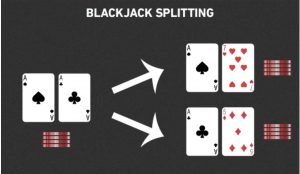
Splitting your hand. If the first two cards you are dealt are the same value, you are allowed to have each card act as the first card of a new hand. Let me explain. If you are dealt two 8s and you have a 25-dollar bet, you can bet another 25-dollar chip and now you have two hands. The dealer will give you another card to go with your first 8, and you continue to play that hand, using basic strategy, until you decide to stick or you go bust. Then the dealer will then give you another card to go with the second 8. Basic strategy will tell you when to split your pairs. You definitely don’t split in all instances.
Doubling down. My personal favorite. Basic strategy will tell you when to do this as well, but in certain situations, you can double your initial bet after you receive your first two cards. The only rub here is you only get one card, good or bad. An example: let’s say you are dealt an 8 and a 3, a total of 11. Place the same amount of money next to your initial bet. The dealer will know you are asking to double down and will give you one card and move on to the next player.
These two plays, splits and doubles, and even better when you get the chance to double after you have split is the way to win at Blackjack. This is true because you are increasing your wager after you have seen your hand. Effectively betting more when you have a good hand. Yummy!
♣
OK, so you now have the basic tools to feel confident in sitting at a table with a goal of having a good time due to your new found knowledge and maybe even winning a few bucks.
Before I return in the next section to Basic Strategy, there is one very important hand I neglected to tell you about earlier. So important, in fact, the name of the hand is also the name of the game! When you are dealt a 21 in your first two cards — an Ace and either a 10 or any face card — this is called Blackjack. Yeah, yeah, yeah, probably should have mentioned this at the beginning of the article. Well, for those who are saying or thinking that, *%$@ you!. If you get a Blackjack, the dealer immediately pays you 1.5 to 1, so if you make a bet of 10, he pays you 15, without asking you if you want another card or not. This, of course, is good. The only time you will need to make a decision when you get this hand is if the dealer is showing an Ace. In this case, he will ask if you want insurance.
Quick sidebar: insurance is available whenever a dealer shows an Ace, but never accept it. It is a poor play. However, when I have a Blackjack and the dealer is showing an Ace, I always take the insurance. What this means is you get an automatic win, regardless of whether the dealer has Blackjack, too. If you decline and the dealer does not have Blackjack, then he will pay you 1.5 to 1, but if he does have Blackjack, it will be a push and you won’t lose, but you get nothing. Hey, it’s hard enough to win at these games, if you have an automatic win, don’t be greedy. Take the cash and run!
♦
Basic Strategy 2
The below is a basic strategy card. These are available in any hotel gift shop. Believe it or not, you are actually aloud to sit at a table with one of these, but please don’t. You’d look like a total dickweed. That’s why the person sitting next to you making a gesture with her finger and thumb on their forehead is not signaling “L for Love!” If any of you have seen the movie Dodgeball, you would understand the reference…so funny. Just learn the rules before you sit down.
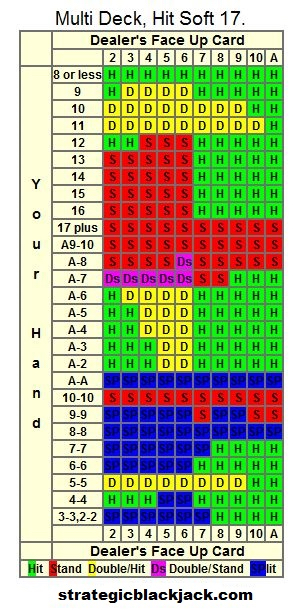
All the green boxes show you when to hit, or take another card; red boxes tell you when to stick. Yellow means you double down.
One thing I failed to explain earlier is what a soft hand means. Remember, I said an Ace can count as 1 or 11? This is a soft hand. When you have an Ace and a 7, this is considered a soft 18. It’s a big deal according to basic strategy. You would stay in all cases when you have a ten with a 7,8,9 or another 10. However, when you have an Ace and a 7, and the dealer shows a 4, you would double with a soft 18, whereas if you had a 10 and an 8, a hard 18, you would stay.
This card is not showing you when to split, so I will:
Always split your As and 8s
Never split your 5s and 10s
Split your 2s, 3s and 7s against a dealer’s 2 through 7
Split your 6s against a dealer’s 2 through 6
Split your 4s when a dealer is showing a 5 or 6
Split your 9s against a dealer’s 2 through 6, and also if the dealer has an 8 or 9.
Note: You don’t split 9s against a dealer’s 7. Why? Because you have 18 and he likely has a 17. Why give up a win?
Hope to se you at a table someday soon. Enjoy!


